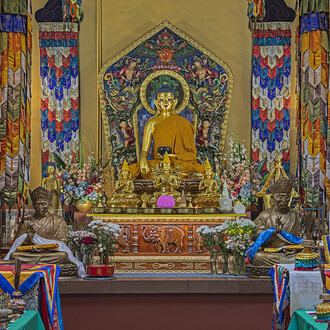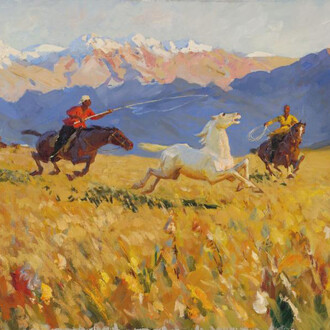Erarta Museum of Contemporary Art presents In the Shadow of Ararat, a group show by contemporary Turkish and Armenian artists 1/7 The Mount Ararat finds itself at the cultural, historical and financial confluence of four countries: Turkey, Armenia, Iran and Azerbaijan, arguably casting a long shadow on the development of each. Exceptionally, its summit is merely 16 km west of the Iranian border and 32 km away from the Armenian border. Throughout history the mountain has witnessed the rise and fall of the Persian and Russian empires and numerous wars to match.
The mountain’s significance in local folklore is very much reflected in the colloquial name given to it. Its Turkish name is Mount Ağrı (Ağrı Dağı), translated to ‘pain’ or ‘heavy/fiery mountain’. The Armenian name on the other hand is Masis (Մասիս), specifically in reference to the king Amasya, the great-grandson of the legendary Armenian patriarch Hayk, who is said to have called the mountain Masis after himself. However, across all Judeo-Christian religions, the Mount Ararat is also known as the mountain of Noah, as according to the Book of Genesis in the Old Testament, Noah’s Ark landed there after the great Deluge. Despite its current location in mainland Turkey, Armenians, who regard the mountain as sacred, believe it to be the cradle of civilisation after the flood. Hence, it is believed that Noah and his family first settled there and then moved to Babylon. As it was written, Hayk, who was a descendent of Noah’s son Japheth revolted against Nimrod and returned to this same area where he officially established the Armenian nation.
Ararat’s fabled and diverse history, despite its physically fixed location, perfectly echoes the incredibly distinctive styles of each artist to be shown at this group exhibition, even though they are from the neighbouring countries which the Ararat looks over. In terms of methodology and medium, Erarta Museum has never shown in a single exhibition such differing compositions, ranging from the ultra-abstract (Mesut Karakış), to Neo-Renaissance style (Daron Mouradian), to contemporary representational (Armen Gevorkian) and neo-Cubist (Hakan Gürbüzer). Covering subject matters across the spectrum, from those pervasive to the human condition, such as life, death and religion; to the mundane, such as commuting, this exhibition aims to provide an invaluable insight into the developing landscape of contemporary Turkish and Armenian art.
(The exhibition is curated by Dasha Vass)
















